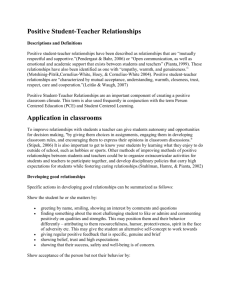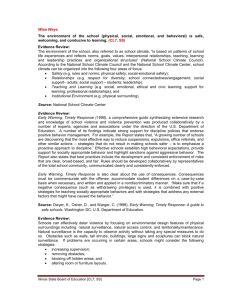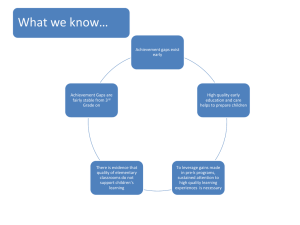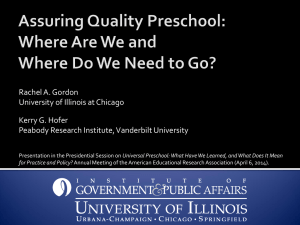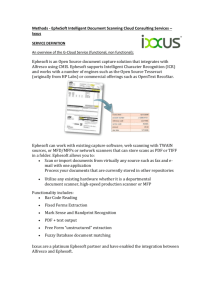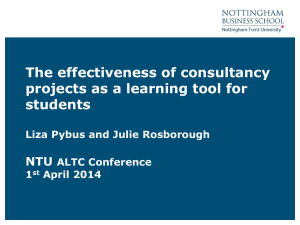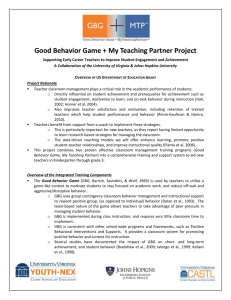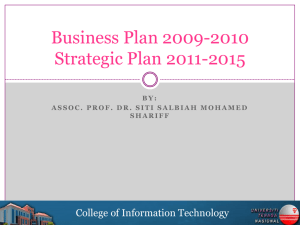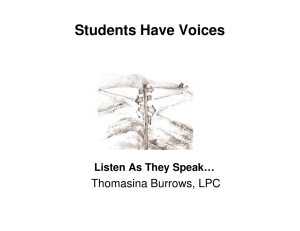Individual Approaches to Building Emotional Support in Pre
advertisement
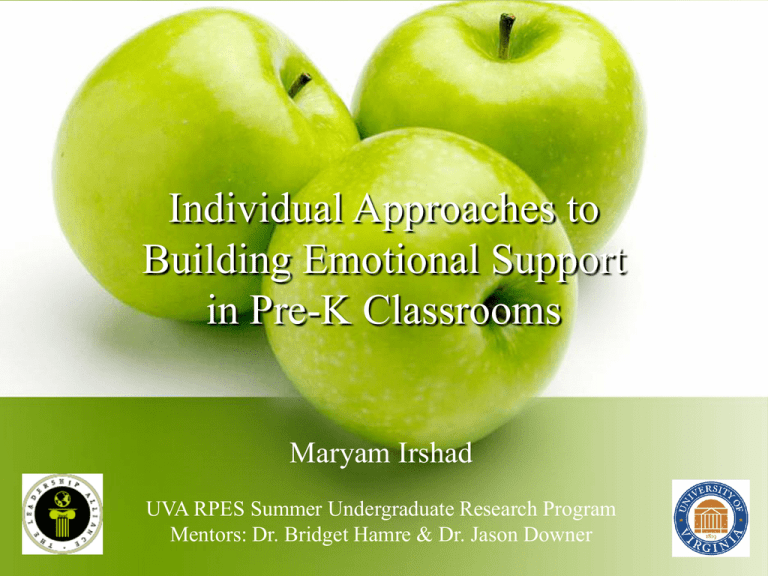
Individual Approaches to Building Emotional Support in Pre-K Classrooms Maryam Irshad UVA RPES Summer Undergraduate Research Program Mentors: Dr. Bridget Hamre & Dr. Jason Downer NCRECE National Center for Research on Early Childhood Education Focusing on improving quality and effects of early childhood education Course: Support of Language and Literacy Development in Preschool Classrooms through Effective Teacher-Child Interactions & Relationships Individualized Consultancy—providing support and feedback to improve the quality of teacher interactions Enabling teachers to feel more effective in the classroom environment NCRECE Study Design Group 1 Group 2 Course & Consultancy Course & No Consultancy Group 3 Group 4 No Course & Consultancy No Course & No Consultancy CLASS Scoring and Reliability Classroom Assessment Scoring System (CLASS)—tool to assess classroom quality on 10 dimensions 7 point Likert scale: Low (1-2), Mid (3-5), High (6-7) 80% reliability of coders—to ensure accurate coding CLASS Domains Classroom Quality Emotional Support Positive Climate Negative Climate Classroom Organization Instructional Support Positive Climate Relationships Physical proximity Shared activities Peer assistance Matched affect Social conversations Positive Affect Smiling Laughter Enthusiasm Positive Communication Verbal affection Physical affection Positive expectations Respect Eye Contact Warm, calm voice Respectful Language Cooperation and/or sharing Variability within Positive Climate Teachers may use different techniques but may end up with the same score “You did a marvelous job, I’m so impressed” vs. physical affection— hugs and high fives Teachers may use the same techniques and end up with different scores—depending on delivery “Wow you rocked that question” bubbly vs. flat affect Negative Climate Negative Affect Punitive Control Yelling Threats Physical control Harsh Punishment Sarcasm/Disrespect Irritability Anger Harsh voice Peer aggression Disconnected or escalating negativity Sarcastic voice/statement Teasing Humiliation Severe Negativity Victimization Bullying Physical Punishment Past Research There is NOT just one way to being a teacher who impacts a child’s life.—there are many pathways and techniques to becoming an effective teacher. Past research done by Hamre and Pianta (2005) found that “Students who see teachers as supportive are more likely to pursue goals valued by teachers, such as engagement in academic activities.” (Child Development, pg. 962) Future Research Which techniques within positive climate are most effective and related to high educational achievement? Questions??? Bibliography Hamre, B. K., Pianta, R. C. (2005). Can instructional and emotional support in the first-grade classroom make a difference for children at risk? Child Development, 76(5), (949967). Pianta, R. C., Belsky, T., Vandergrift, N., Houts, R., Morrison, F. R. (2008). Classroom effects on children’s achievement trajectories on children’s achievement trajectories in elementary school. American Educational Research, 45(2), (365-397). Pianta, R. C., La Paro, K. M., Hamre, B. K. (2008). Classroom Assessment Scoring System Pre-K. Paul H. Brookes Publishing Co. Inc., Baltimore.

